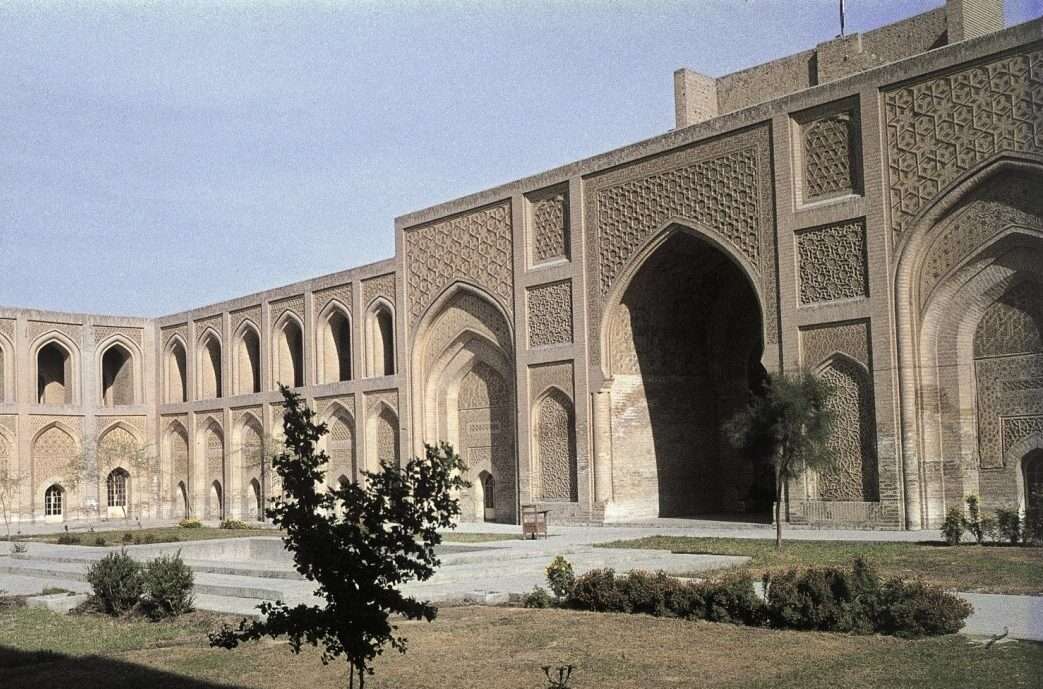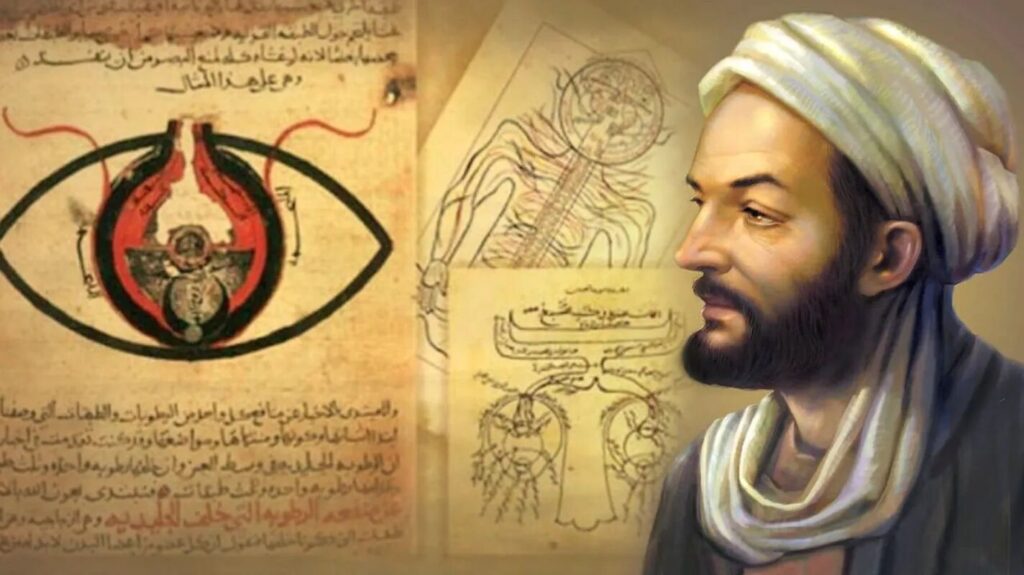Ghazali known in the west as Algazele tried to reconcile revelation, reason, and spirituality. He incorporated existing beliefs and categorizations with innovative ideas; it is no surprise that he was criticized by all sides. Rationalists criticized him for his orthodox theological beliefs, theologians criticized him for his rational and spiritual ideas and Sufis criticized him for his orthodoxy. In my view, he put reasonable limits on all disciplines to try to walk a middle path.
The story of his mortal remains explains the dilemma. He was buried in his hometown of Tus but for centuries there was no trace of his burial site. In 1995, the remains of his tomb were found during excavation. No one is interested in the restoration as he happened to be buried in a land that converted to Ath’na Ash’ari (twelve imam branch of Shia Islam) in 16th and 17th centuries. Ghazali had denounced Ismaili Shia doctrines therefore no surprise that he has no admirers in that land. Less than a mile away is the grand mausoleum of famous Persian poet Ferdowsi (d. 1020).
Any comments about his philosophical or spiritual ideas are above my pay grade but I have looked at social aspects of his ideas. Every individual is a product of his time and influenced by ideas and events around him.
Muslim intellectual life in 10th and 11th centuries was geographically distinct and influenced by the nature of the ruling political authority and interactions with other cultures. The cultural center of Baghdad was ruled by the Abbasid caliphs only in name as the powerful dynasty of Buyid emirs (945-1055) and later Seljuk sultans (1037-1194) were the real power holders. Buyids were Ath’na Ash’ari Shia originating from northwestern Iran while Seljuks were Sunni Turks. Ismaili Shia Fatimid empire ruling over Egypt, Syria and North Africa was a thriving mercantile empire that supported da’wa (missionary) activity sending da’is (missionaries) along all the trading routes it controlled.
In Central Asia and Eastern Iran, a Sunni Persian Samanid dynasty (874-999) consisting of Persian notables and traders controlling Silk Route trade reached its zenith where Bukhara rivaled Baghdad in learning and culture. Nishapur and Ray also became thriving centers of learning. Samanid’s main interest was trade and they allowed free practice of all faiths and sects. Major works were written in modern Persian called Dari. It produced intellectual giants like Muhammad bin Ismail al Bukhari (d. 870), Abu Nasr al Farabi (d. 950), Abu Ali Hussain bin Abdullah Ibn Sina (d. 1037), Abu Mansur Muhammad al Maturidi (d. 944) and became the nursery for later Sunni revival.
In Andalusia (Muslim Spain), a Sunni Umayyad dynasty created a unique cross-cultural and cross-denominational intellectual environment. However, it was the periphery and its influence was limited to the Iberian Peninsula and adjacent North Africa belt. The major contribution of Andalusia was transfer of knowledge from East to West with translations of major Arabic works into Latin and Hebrew. All these Muslim centers of learning were not individual bubbles, but traders and scholars travelled, and ideas were circulating between these centers enriching everyone.
The tenth century is called by some historians a ‘Shia century’ as Ismaili Shia of Fatimid dynasty and Ath’na Ash’ari Shia of Buyid dynasty patronized intellectual life. Shia theology went through its own transformation. In the presence of an infallible imam, there is little role for reason to clarify a theological question. After the occultation of the twelfth Imam in 869, there was no escape from allowing the reason to take its seat at the table. Persian Muslims had access to Persian translations of works of Greek philosophers commissioned during the pre-Islamic Sassanid kings. A rich intellectual tradition flourished that used reason, philosophy and spirituality in the Shia historical context. Among Sunnis, intellectual trends included tafseer (commentary on Quran), hadith (sayings of the Prophet PBUH), fiqh (jurisprudence), Mu’tazila (rationalist), Ash’ari (a middle ground of scriptural authority linked with rational theology), kalam (scholastic/dialectical theology) and several strains of sufism (mysticism). Arab and Persian translations of Greek works introduced Hellenistic ideas in Muslim centers of learning. The major external challenge to Muslim rule in the shape of the First Crusade (1096-1099) also occurred during Ghazali’s lifetime. This brief survey of the background of his times helps to understand influences on Ghazali’s thought process.

Ghazali was Persian by descent and born near modern day Meshed. Compared to his Arab contemporaries his knowledge of Persian language gave him unique access to Persian sources. His grand uncle was a theologian, his father and brother sufis and his teacher a leading Asha’rite theologian. Early life sufi experiences bore no fruit and he became a theologian in Asha’rite tradition. He excelled and was appointed chair of faculty of theology of the famed Nizamiyah Madrassah of Baghdad. This brought him fame, fortune, and company of influential ruling elite. His anti-Ismaili polemics were written during this period at the request of Abbasid rulers who were in competition with the Ismaili Fatimid dynasty for legitimacy.
He underwent a personal crisis that can be best described in modern terms as a nervous breakdown. He was a skeptic, and this may have been a trigger as he could find no answers in theology and philosophy. He left his coveted post at Baghdad and spent the next decade wandering in Syria, Jerusalem, Egypt, Mecca and back to his birthplace in Iran. It was during this period that he found peace in the world of sufism. He declined government positions except a stint at Nizamiyah madrasah of Nishapur at the insistence of the local governor. He established a khanqah (sufi convent) and spent his last days with his students.
His famous works include maqasid-e-falasifa (intentions of philosophers) that deals with the position of philosophers on various subjects and Tahafut al Falasifa (incoherence of the philosophers) which is critique of philosophers with focus on al Farabi and Ibn Sina. These works were written when he was at Nizamiyah Madrassah of Baghdad. He kept writing during his travels and completed his magnum opus Ihya-e-ulum al din (Revival of Religious Sciences). Al Munqid min al Dalal (Deliverance from Error) is his autobiography that he wrote near the end of his life.
Ghazali’s attack on Ismailis stemmed from his position as an orthodox theologian as well as government employee of a Caliphate that had condemned the rival Ismaili Fatimid Caliphate. Ghazali’s anti-Ismaili polemic was titled Fadâ’ih al-Bâtiniyya (Scandals of the Esoteric). Ghazali had access to the Persian writings of the Ismaili philosopher Nâsir-i Khosrow (d. 1075) that he misunderstood or misrepresented to denounce Ismaili doctrine. His own later life turning towards esoteric when he delved deep into sufi practices suggests that he may have been influenced by Khosrow. However, he aligned these practices with orthodox Sunni doctrines.
Ghazali is careful in his criticism and when refuting twenty positions of the philosophers, he considers seventeen as bid’a (innovation) that do not pose any threat to sharia (religious law). However, he considers three positions – eternity of the world, God’s knowledge limited to universals and not particulars and that souls cannot return to the body after death incompatible with revelation.
In my view, Ghazali should have stopped at presenting his case in refuting philosophers and Ismailis and let readers make their own judgements. Unfortunately, his job as a Jurist propelled him to cross the dangerous line that has spilled so much blood in Muslim history. He pulled out the most poisonous arrow of the jurist’s quiver and added a fatwâ (religious decree) that a philosopher who taught three prohibited positions and Ismailis in view of their belief in dualism and denial of resurrection are kâfir (unbelievers) and murtids (apostates); hence their blood can be shed without a just cause. My personal view is that the Creator has given the right to his creation to even outrightly reject him and no human being, no matter the exalted position he holds can take away this right. He can be a prosecutor presenting his case with legal arguments. However, he cannot change the role that after presenting his case, he sits on the seat of the judge to pass a judgement. I will allow Ghazali the role of the prosecutor but will not allow him the role of the judge for the judgement on the matter of belief that belongs only to the Creator.
Ghazali’s own views were controversial, and many opposed his teachings. This intolerance resulted in his books being burned and teachings banned in Andalusia. In their own turn, rationalists were also condemned, and Ibn Rushd’s (d. 1198) works were burned. Ahmad ibn Hanbal (d. 855) himself suffered from the mihna (inquisition) of the Abbasid Caliph Mamun for disagreement with the official doctrine. However, his adherents following literal meaning of theology harassed scholars with whom they disagreed. Many restricted their public life and teaching activities or migrated for safety. Intolerance reached to such a state that people were reluctant to attend the funeral of scholars as they feared harassment from opposing factions. This intolerance and academic debates descending into civil strife put severe strain on Muslim intellectual life as independent thought brought the risks of social ostracization or even physical harm.
Transfer of knowledge between cultures and faiths is a two-way traffic. Rapid conquests brought the Muslims in contact with intellectual and spiritual traditions of other faiths and cultures. Muslim sufi traditions were heavily influenced by Christian ascetic traditions. Muslims were introduced to Greek knowledge by Syriac and Arab translations of Christian authors as well as pre-Islamic Persian translations of Greek and other works.

The influence of Ghazali on Christian intellectual trends is one of that strange case where translation plays a trick on its audience. The early translation period from Arabic to Latin was centered in Toledo. The only book of Ghazali that was translated during this period was maqasid-e-falasifa (intentions of philosophers). It was translated by Dominicus Gundisalivi (d. 1190) of Toledo and titled Summa theoricae philosophiae. In this work Ghazali reports philosophical doctrines that rely heavily on Ibn Sina’s Persian manuscript Danish Nama e Alai (Philosophy for Al’a al Dawlah) that deals with metaphysics and logic. Ghazali was simply reporting these doctrines with which he had fundamental disagreements that he explained in his other works. However, translators assumed that these were Ghazali’s own views and erroneously anointed him as Ibn Sina’s disciple. Summa theoricae philosophiae introduced Arab philosophy to Christendom and influenced Albert the Great (d. 1280) and Thomas Aquinas (d. 1274).
Ghazali’s influence on Jewish intellectual movement is divided into two periods. First period is on Jews of Andalusia who thought and wrote in Arabic and had direct access to Arab manuscripts. Judah Halevi (d.1141), Abraham ibn Daud (d. 1180), Moses Maimonides (d. 1204) and Hasdai Cesca (d. 1410) are representatives of the first period. Halevi was influenced by Ghazali’s view of the threat of philosophy to revealed religion while Maimonides work of reconciliation of revealed Judaic laws with philosophy followed Ghazali’s footsteps.
The second period is the Hebrew translation period in 13th century onward. Ibn Rushd influenced many Jewish intellectuals of this period known as Averroists. The Jewish Averroist Isaac Albalag wrote the first Hebrew translation of Ghazali’s doctrines of philosophers in 1292. Later translations and commentaries by Jewish authors resulted in Ghazali replacing Ibn Rushd among Jewish intellectuals.
Ghazali’s influence on Muslim thought is undisputed. His own skepticism opened so many doors of knowledge. He found the middle road where revelation, reason and spirituality complemented rather than competed. I incline to agree with Abdur Rahman Ibn Khaldun’s (d. 1406) idea of use of reason to understand revelation that “we are trying to weigh the mountain with a scale that is designed to weigh the gold”.
“Dear friend, your heart is a polished mirror. You must wipe it clean of the veil of dust that has gathered upon it, because it is destined to reflect the light of divine secrets.” Al Ghazali




